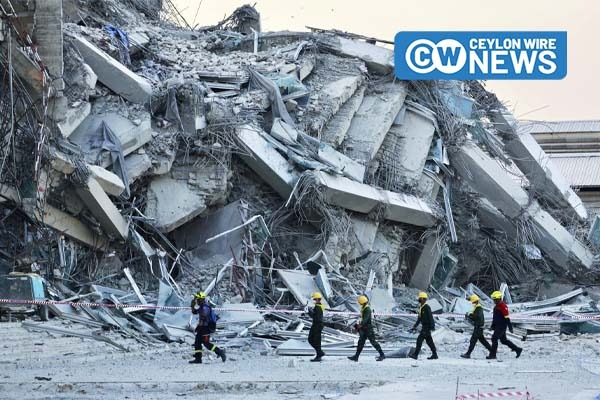Myanmar’s military leadership has declared a week of national mourning, with flags flying at half-mast until April 6, in remembrance of the victims of a devastating earthquake that has claimed more than 2,000 lives. Meanwhile, in Thailand, hopes of finding more survivors beneath the rubble are fading.
Rising Death Toll and Ongoing Rescue Efforts
The ruling junta announced on Monday that the death toll in Myanmar has risen to 2,056, with over 3,900 injured and 270 still missing. Rescue teams in Mandalay, near the epicenter of the 7.7-magnitude quake, pulled four people— including a pregnant woman and a young girl— from collapsed buildings, according to China’s Xinhua news agency.
In Bangkok, emergency crews detected signs of life in the wreckage of a collapsed skyscraper, three days after the disaster. The confirmed death toll from the building collapse has reached 12, bringing Thailand’s total casualties to 19, with 75 still missing at the site. Rescuers are racing against time, deploying scanning machines and sniffer dogs to locate survivors before the critical 72-hour window closes.
Civil War Complicates Relief Efforts
Myanmar’s ongoing civil war is hampering efforts to reach those in need. Arnaud de Baecque, Myanmar’s representative for the International Committee of the Red Cross, highlighted security challenges in accessing affected areas, particularly across conflict zones.
A rebel group accused the junta of continuing airstrikes on villages despite the disaster. In response, Singapore’s foreign minister has urged an immediate ceasefire to facilitate relief efforts.
International Assistance and Humanitarian Challenges
Countries including China, India, and Thailand have dispatched relief supplies and rescue teams, joined by aid workers from Malaysia, Singapore, and Russia. The United Nations is ramping up its humanitarian response, while the U.S. has pledged $2 million in aid through Myanmar-based organizations.
“The most important thing is that we can bring hope to the local people,” said Yue Xin, head of the China Search and Rescue Team.
However, the earthquake has compounded an already dire humanitarian crisis. Myanmar’s infrastructure— including roads, bridges, railways, and airports— has sustained severe damage, further delaying aid distribution. With over 3.5 million people already displaced by the ongoing conflict, healthcare facilities are overwhelmed, and many survivors are left without shelter or food.
“We see devastated communities in Mandalay and Naypyidaw,” de Baecque noted. “People are sleeping outside, unable to cook meals, and health facilities are struggling to meet the increased demand.”
As the death toll rises and challenges mount, rescuers and aid workers are in a desperate race against time to deliver relief to those most in need.










